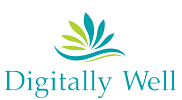
In the dynamic landscape of modern workplaces, digital communication has become the cornerstone of interaction. From emails to instant messaging platforms and video conferences, the digital realm facilitates seamless collaboration and connectivity. However, within these virtual spaces, a silent menace often lurks: digital microaggressions. While seemingly innocuous, these subtle forms of discrimination can erode morale, hinder productivity, and perpetuate systemic inequalities. In this blog, we will dive into what digital microaggressions entail, provide examples of their manifestation, and outline actionable steps to foster a more inclusive and respectful digital workplace culture.
Defining Digital Microaggressions
Digital microaggressions encompass a spectrum of behaviours, remarks, or actions that communicate derogatory or exclusionary messages to individuals based on their race, gender, ethnicity, sexual orientation, or other marginalized identities.
Unlike overt forms of discrimination, microaggressions are often unconscious or unintentional, making them challenging to detect and address. In the digital context, these subtle slights can manifest in various forms, including dismissive language, stereotypical assumptions, and subtle forms of exclusion.
Examples of Digital Microaggressions
- Unintentional Marginalization: In an email thread discussing project assignments, a colleague consistently overlooks or minimizes the contributions of a team member from a minority background, inadvertently reinforcing their sense of invisibility or insignificance within the team.
- Subtle Stereotype: During a video conference, a participant interjects with a comment that perpetuates a harmful stereotype about a specific ethnic or cultural group, contributing to a hostile or unwelcoming environment for those affected.
- Exclusive Vernacular: In a group chat, team members routinely address each other using gendered or culturally specific terms, inadvertently excluding individuals who do not identify with or resonate with those labels.
- Unconscious Bias: In an instant messaging exchange, a colleague expresses surprise or disbelief when a team member from a historically underrepresented background demonstrates expertise or proficiency in a particular area, reflecting underlying biases and assumptions about competence.
The Impact of Digital Microaggressions
Despite their subtle nature, digital microaggressions can have profound and enduring effects on individuals and organizations. They can contribute to feelings of isolation, imposter syndrome, and disengagement among employees who are targets of such behaviours. In addition, unchecked microaggressions can undermine teamwork, diminish trust, and perpetuate systemic inequalities within the workplace. Recognizing and addressing these dynamics is essential for cultivating a more inclusive, equitable, and psychologically safe digital workspace for all.
Simple tips to help prevent engaging in microaggressions:
Use inclusive language that respects diversity and acknowledges different perspectives.
Refrain from making assumptions about someone’s background, identity, or experiences based on stereotypes or generalizations. Instead, focus on individuals’ unique qualities and contributions.
Opt for gender-neutral language whenever possible to ensure inclusivity and avoid unintentional reinforcement of gender stereotypes.
Be mindful of cultural differences in communication styles and preferences. Avoid imposing your own cultural norms and be open to understanding and respecting others’ cultural backgrounds.
Think Before You Type! Take a moment to consider the potential impact of your words before communicating digitally. Consider how your message may be interpreted by different audiences and adjust accordingly.
Avoid dismissing or invalidating someone’s experiences, even if they differ from your own. Practice active listening in digital communications by paying attention to others’ perspectives and experiences.
Engage in debates and discussions respectfully, even if you disagree with someone’s viewpoint. Avoid personal attacks or derogatory remarks and focus on discussing ideas and perspectives constructively.
Be open to receiving feedback and use it as an opportunity to learn and improve your digital communication skills, particularly in relation to avoiding microaggressions.
Take the initiative to educate yourself about different cultures, identities, and experiences. Increase your awareness of potential microaggressions and actively work to prevent them in your interactions.
Taking Action Against Digital Microaggressions
The Role of Digital Wellness Training and Workshops
At Digitally Well Inc., we recognize the importance of addressing digital microaggressions in the workplace. Our digital wellness training and workshops provide organizations with the tools, strategies, and resources needed to cultivate a more inclusive and respectful digital workplace culture. Through interactive sessions, we empower employees at all levels to recognize, address, and advocate against digital microaggressions effectively. Together, we can create a workplace where every voice is heard, valued, and respected.
Digitally Well is here to support your journey towards a more inclusive and respectful digital workplace culture. Contact us today to learn more about our digital wellness training and workshops and take the first step towards creating positive change in your organization.

